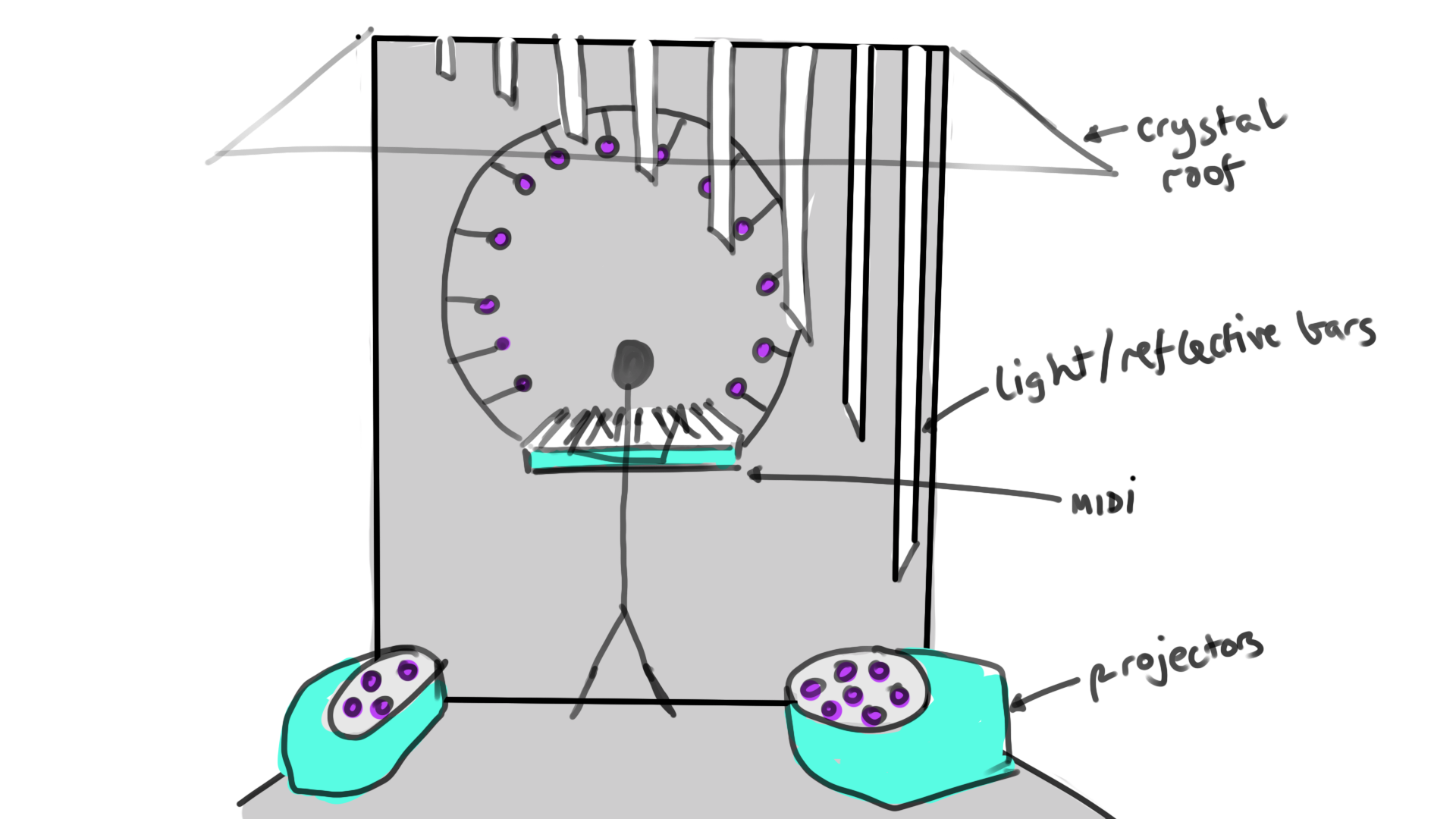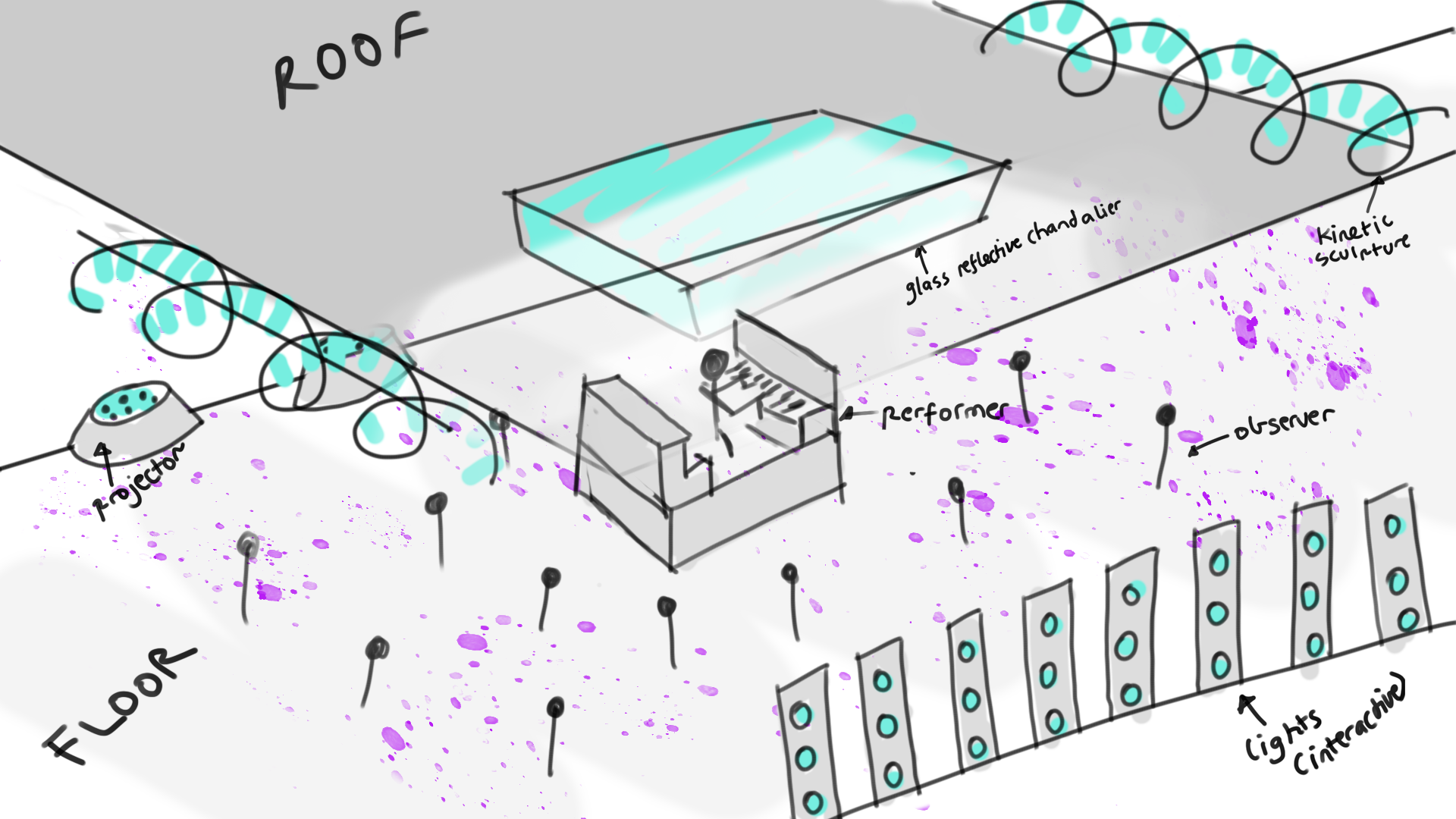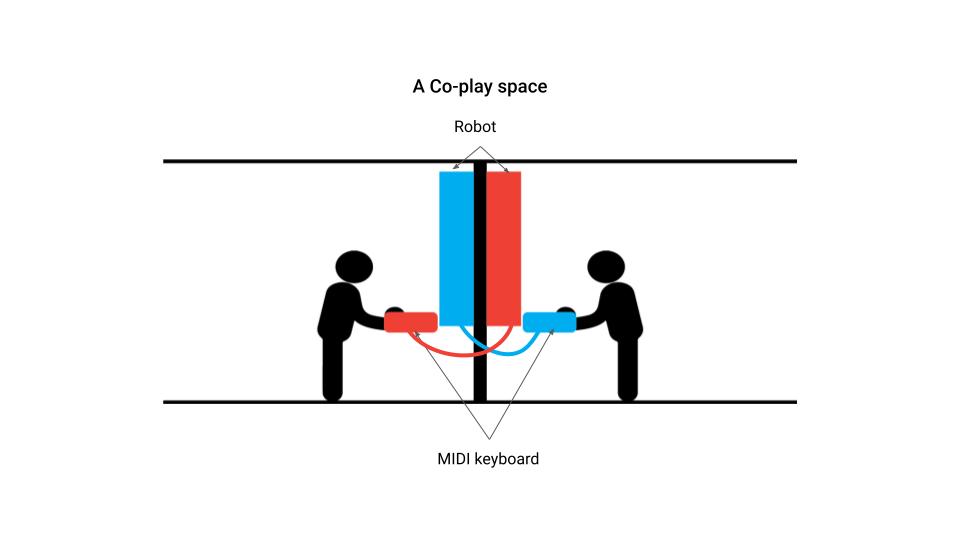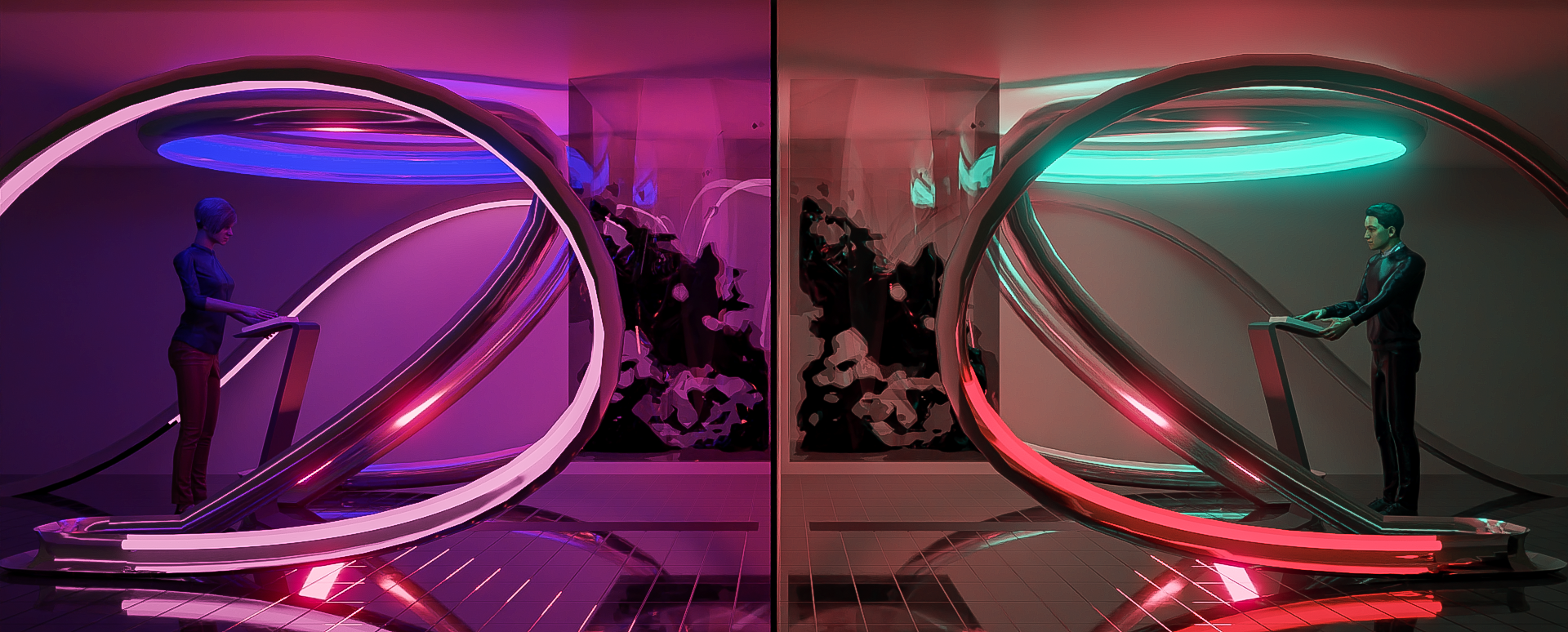Chromesthesia for people
December 2021Space, Industrial Design
Chromesthesia for people is an exhibition space that promotes collaborative musical performances while displaying the magic behind cymatics through lights and ferrofluid. The goal of this ‘robot’ is to not play music but to aid it from a performance point of view for live music. My initial ideas lacked purpose. They had no reason to exist and the idea of chromesthesia wasn’t enough for me to take any of these ideas forward. Both of them are centered around a player with observers and the music played triggers different elements within the space to create a sense of chromesthesia.
The elements that I was looking to incorporate into this space were :
- Color in a physical space
- Independant from the source of music
- Association of notes to color randomly.
- An experience in a controlled space.



While thinking about this project I also visited the autumn lights festival. It gave me several ideas about the different mediums by which I could incorporate light and color into my space. I also wanted to make sure that I can include Anthony Howe’s work into my space because of it’s surrealist and maximalist qualities. Having visited the autumn lights festival, I realized that I wanted to take a maximalist approach towards the space to achieve the surreal chromesthesia effect that I was looking for.Some of the notable inspirations for my process throughout are PIG Design, Martina Mondadori Sartogo, Leo Villareal, Syzygryd and teamLAB.

Having scoured the internet for inspiration, my initial ideas still lacked purpose. They had no reason to exist and the idea of chromesthesia wasn’t enough for me to take any of these ideas forward. Both of them are centered around a player with observers and the music played triggers different elements within the space to create a sense of chromesthesia.
A Co-Play Space : This was my final idea and the one that I went forward with. The concept is for a space with robots on either side of it. The player on one side influences the robot on the other side creating a collaborative, musical and surreal experience.


To help visualize the space and all its elements, I created a short animation showing a piece of music played by two people on either sides.
I did a primitive test where I pushed different solid shapes against a stretched out latex sheet to test the kind of shapes that I wanted for my central kinetic piece.
After completing the animation and the physical model, there were a few things that stuck out immediately. The kinetic sculpture reacting to sounds that quickly in a physical space would be unrealistic. Using a liquid sculpture instead would help get better movement. Also, the keyboard isn’t a relatable method of input for people that aren’t familiar with music. Since this is supposed to be a space for everybody, soundboard would be a better alternative since it could have pre programmed notes on it.
Using ferrofluid as a kinetic sculpture
Having decided to use ferrofluid for my kinetic sculpture, I started looking at people who were already using ferrofluids in the field of cymatics. The major portion of the projects like this one by Nigel Stanford I found used ferrofluid in a horizontal fashion but my space needed the ferrofluid to be vertical. After searching a little more, I found exactly the thing that I needed.
Great Scott’s video on YouTube manipulating ferrofluid to an audio input is exactly what I needed.
After watching the video and understanding the mechanisms behind making something like this, I went ahead and made a prototype. I started first with hand winding my own electromagnets. I made my own electromagnets in part because I couldn’t acquire ready-made ones and I also wanted to learn how to make them. From there I went on to make the circuit on my breadboard. The circuit uses an IC called MSGEQ7 which takes an audio input and converts it into seven analog signals based on the frequency bands in the audio sample. I took two of the analog outputs provided by the IC and used those to control my electromagnets via MOSFET transistors.



This is the final result of the ferrofluid experiment. Here the ferrofluid is being influenced by two electromagnets which are reacting to “Cory Wong” by Vulfpeck.
I combined all of the elements for my final 3D renders.



